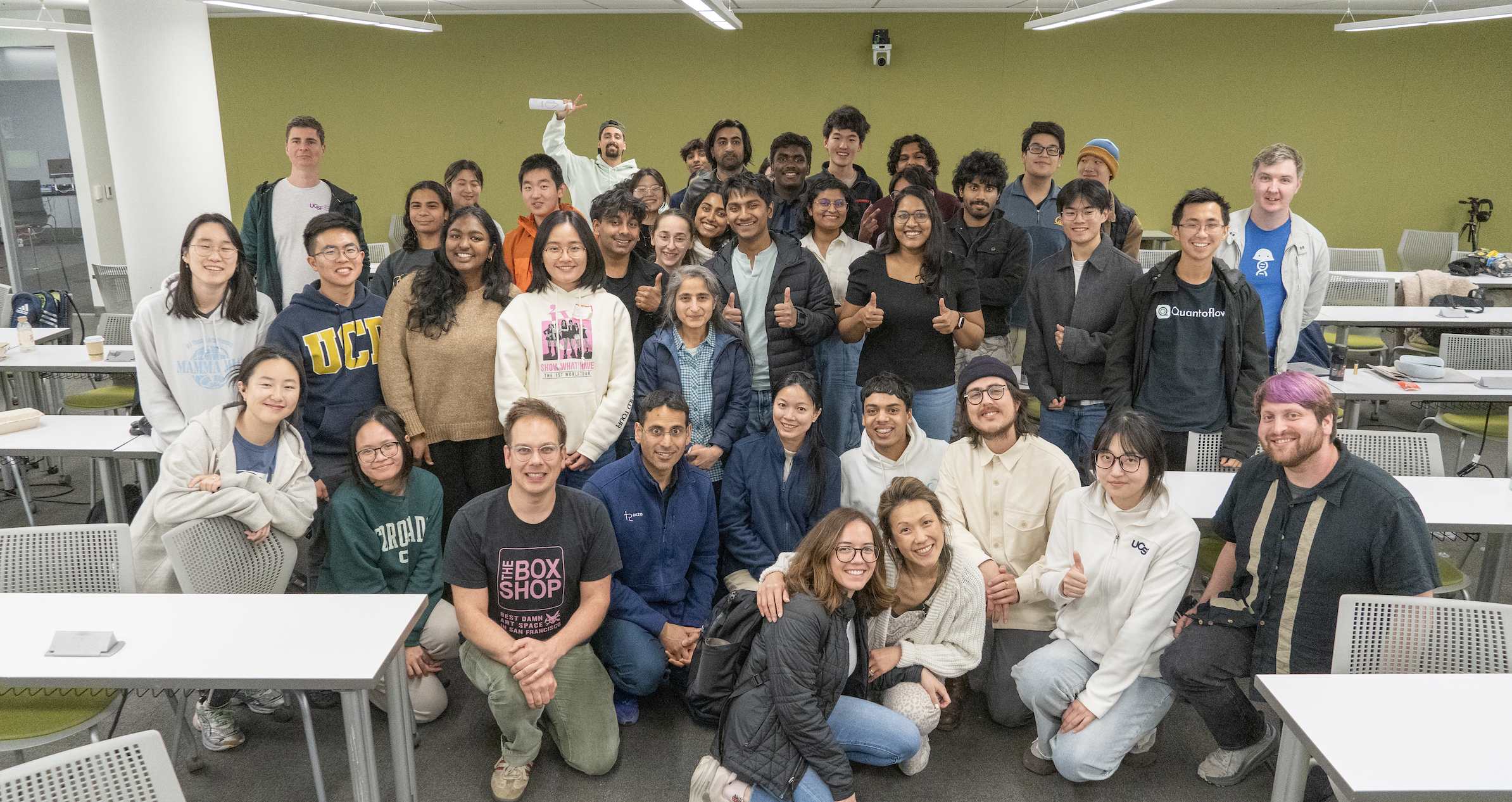
The 2025 QBI Hackathon was a great success, with 10 teams dedicating 48 hours to collaboration and creative problem-solving. It was inspiring to witness the Bay Area developer community and scientists from UCSF, UCB, UCSC, and USF come together, combining their expertise to tackle complex challenges with innovative solutions in such a short amount of time. We look forward to seeing how some of these projects evolve. This event once again highlighted the transformative power of collaboration and the exciting ideas that emerge when diverse disciplines unite. Explore the team projects and check out links to their code below!
Cys-TEAM – First place
Development of a data processing and analysis pipeline for proteomic experiments carried out on a panel of 59 different cancer cell lines. We built a web-based tool that uses our pan-cancer proteomic dataset to generate a minimal panels of cells based on the presence of user-defined proteins of interest. We also made a previously developed cysteine-focused analysis tool accessible and available on a simple-to-use web interface. For more details see the team’s GitHub page.
Max Bind AI – Second place (split)
Proteins exhibit varying propensities for ligand binding. For a given binding site, we aim to identify the key structural features of the optimal ligand that contribute to the strongest binding interactions. Our goal is to predict both the ideal ligand’s structural characteristics and its expected binding affinity. For more details see the team’s GitHub page.
DECODE – Second place (split)
Many drugs currently on the market can easily be repurposed to treat other diseases, but discovering which diseases a new drug can treat can be an arduous process. Our project used the features encoded by ESM and MolecularTransformer Embeddings to predict inhibitory efficacies of proteins and drugs, based on the database BindingDB. Our first model, trained on approximately 15% of BindingDB's data, achieved >80% accuracy, indicating the viability of this approach improve the process of drug repurposing. For more details see the team’s GitHub page.
Ideonella – Third place
This project focuses on optimizing PETase, an enzyme that digests polyethylene terephthalate (PET), a common plastic, to reduce plastic pollution. Using machine learning models like XGBoost and Linear Regression, we predict the Km values of mutated PETase sequences, aiming to reduce experimental costs and enhance enzyme efficiency. The repository includes scripts for generating mutant sequences, predicting Km values, and using the ESM-2 model to identify the best evolutionary candidates for improved PETase performance. For more details see the team’s GitHub page.
Mind Over Data
What If we could read your mind in real time? Our product allows you to do this, with a deepL recursive approach, we emulate the brain's native architecture to simulate not only the user's thoughts in real time, but also the way they think. For more details see the team’s GitHub page.
E.L.O.R.A
The E.L.O.R.A project harnesses the MUSE S Gen2 brain wave reader to analyze brain waves and identify anomalies in brain waves that can signify potential disorders, aiming for a deeper understanding of how brain waves correlate to various neurodisorders. For more details see the team’s GitHub page.
RM Fold
We use sFold to identify ASOs with a high probability of binding to a target gene. sFold only runs on x86 Linux so was deployed to a cloud VM and wrapped in a Node JS server. This allows us to dockerize the program for cross platform compatibility and scalability. A cleaner web app was created to consume to output data and present this in a more user friendly way. For more details see the team’s GitHub page.
EvoBeevos
EvoBeevos Variant Predictor is a comprehensive Variant Effect Predictor that leverages the Evo 2 AI model to predict genetic variant effects. It compares these predictions with ClinVar data and Ensemble data, offering users a thorough analysis of variant significance. The app features a Streamlit interface, API integrations, and an AI chatbot for user assistance. For more details see the team’s GitHub page.
HYPERA
HYPERA is an AI-driven project that utilizes multiple hyperparameter agents during model training for segmenting and analyzing 2D microscopy images. Instead of batch processing, HYPERA employs autonomous agents that can segment, refine, and adapt to image data dynamically. This approach reduces the need for manual annotation and aligns with current trends in AI microscopy, such as real-time analysis and adaptive learning through autonomous systems. For more details see the team’s GitHub page.
SNP-automate
Single nucleotide polymorphism in ABC transporters contributes to inter-individual differences for susceptibility for the disease or various therapies is associated with clinical conditions, which makes it important to study. SNPs can be prioritized for functional and clinical studies by analyzing interactions (H-bonds, steric clashes, non-polar interactions) of these specific residues before and after mutation in different conformational states using molecular visualization structural tools. Automating the above mentioned process of in-silico screening of SNPs into a tool, “SNP-automate” in combination with genome sequencing of patients can be a boon to the field of precision medicine. For more details see the team’s GitHub page.